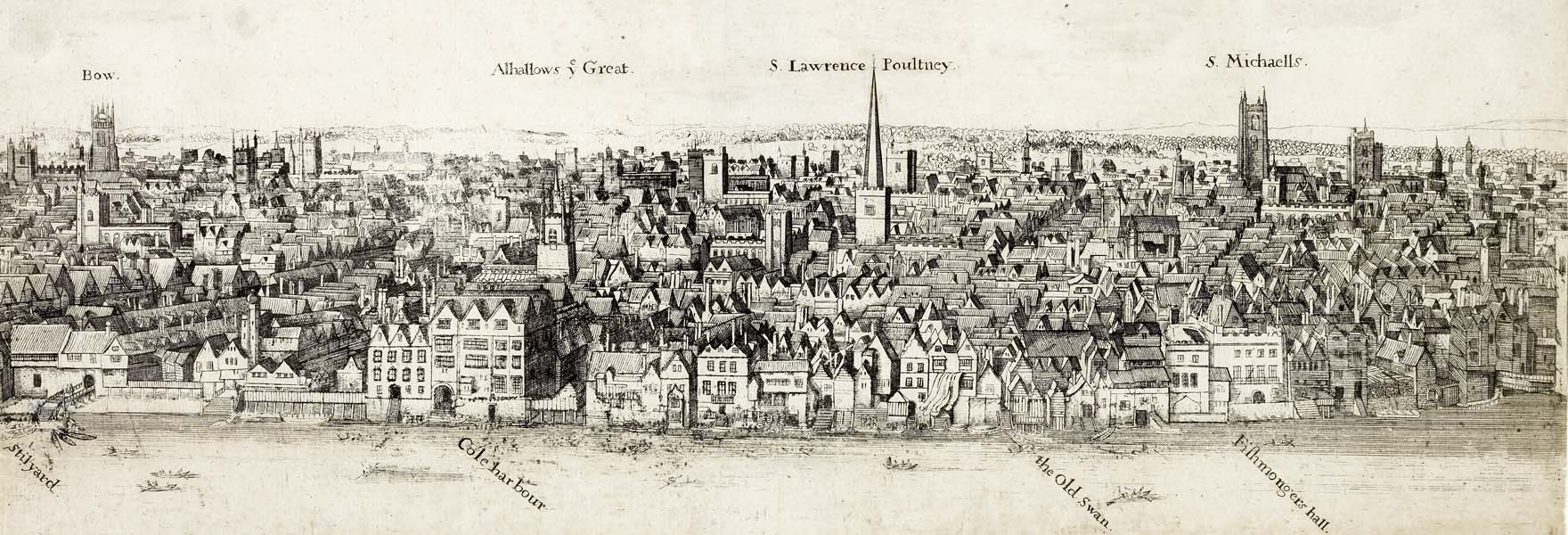The Museum of London has nearly two hundred prints made or based on designs by Wenceslaus Hollar, which form a vital record of the city both before and after the 1666 Great Fire of London.
Born to a prominent Protestant family in Prague, Wenceslaus Hollar was intended by his parents for a bureaucratic or legal career. He defied his father’s wishes to become an artist, although he seems to have had no formal training. Between 1627 and 1636 he moved around Europe, having been compelled by the edict of the Holy Roman Emperor Ferdinand II to convert to Catholicism or emigrate. He moved between Stuttgart (1627-9), Strasbourg (1629-30), Frankfurt am Main (1631) and Cologne (1632-6), from where he made extensive tours up the Rhine to Mainz in 1632 and downstream to Amsterdam in 1634.
Hollar was brought to London in 1636 by the patron of the arts Thomas Howard, the second earl of Arundel, who had travelled to Cologne as an ambassador. Although it was intended that he should make etchings of the paintings and drawings in Howard’s collection, Hollar completed only four works, and instead set about making original compositions and courting other patrons. One of his major projects during this period was a set of twenty-six plates of women’s costumes documenting ‘The severall habits of English women from the nobilitie to the country woman’ (1640), a set of which are in the Museum of London’s collection. He also drew various buildings and views of London which served as source material for later works, including his famous ‘Long View of London from Bankside’ (1647), which he printed in Antwerp, having left England in 1644.
He returned to London in 1651 or 1652, where he worked for the publisher John Ogilby and the antiquarian Sir William Dugdale. His plan for a large-scale map of London was rendered obsolete by the great fire of 1666, but the event provided the opportunity to produce new views of the city to reflect the damage, including a new panorama. In 1669 he accompanied a diplomatic mission to Tangier as the official artist. During the 1670s he produced a variety of works including frontispieces, portraits and maps for the book and print trade, and architectural works for antiquarians.








